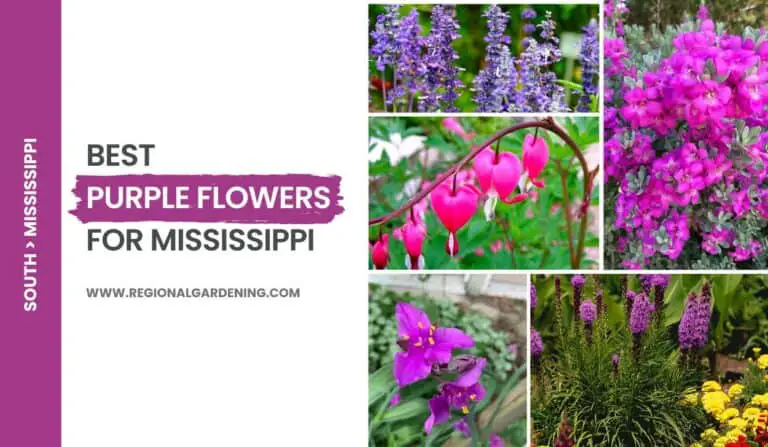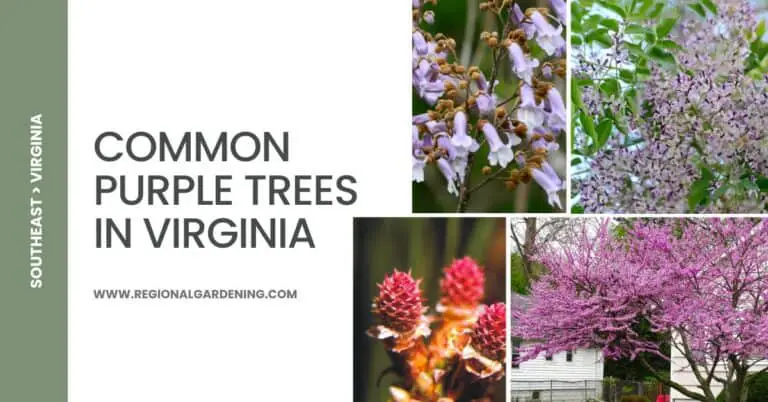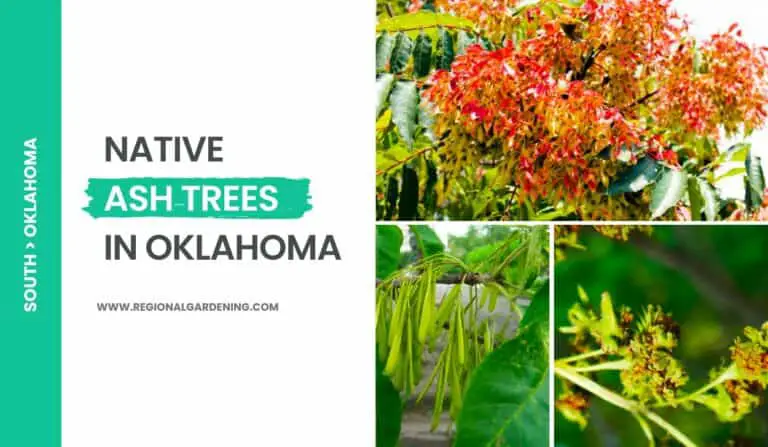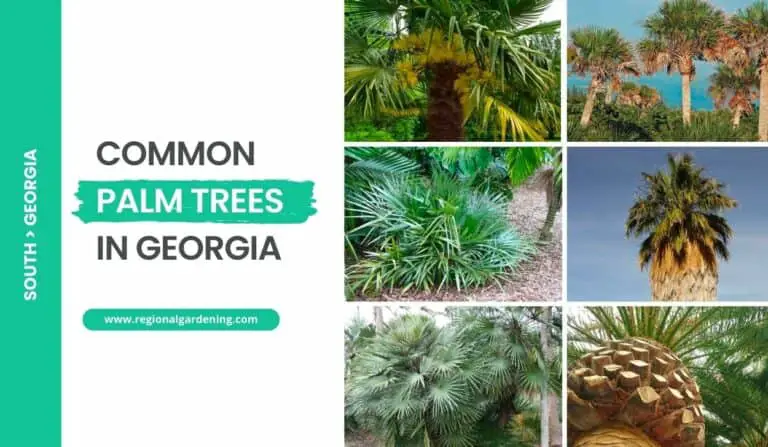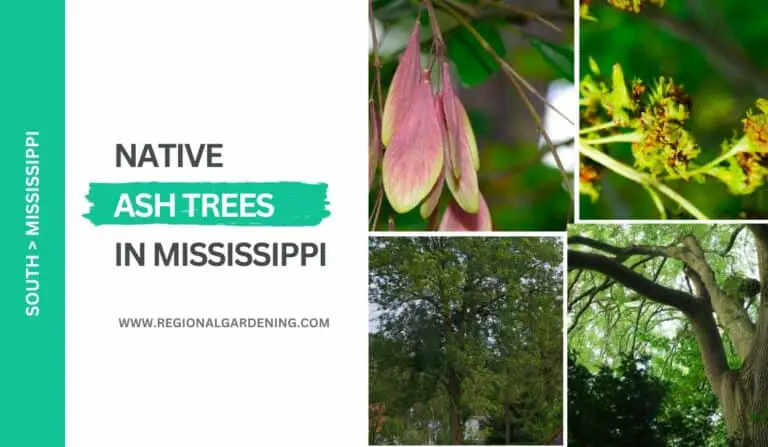3 Common Birch Trees In Oklahoma (Native & Non-Native Varieties)
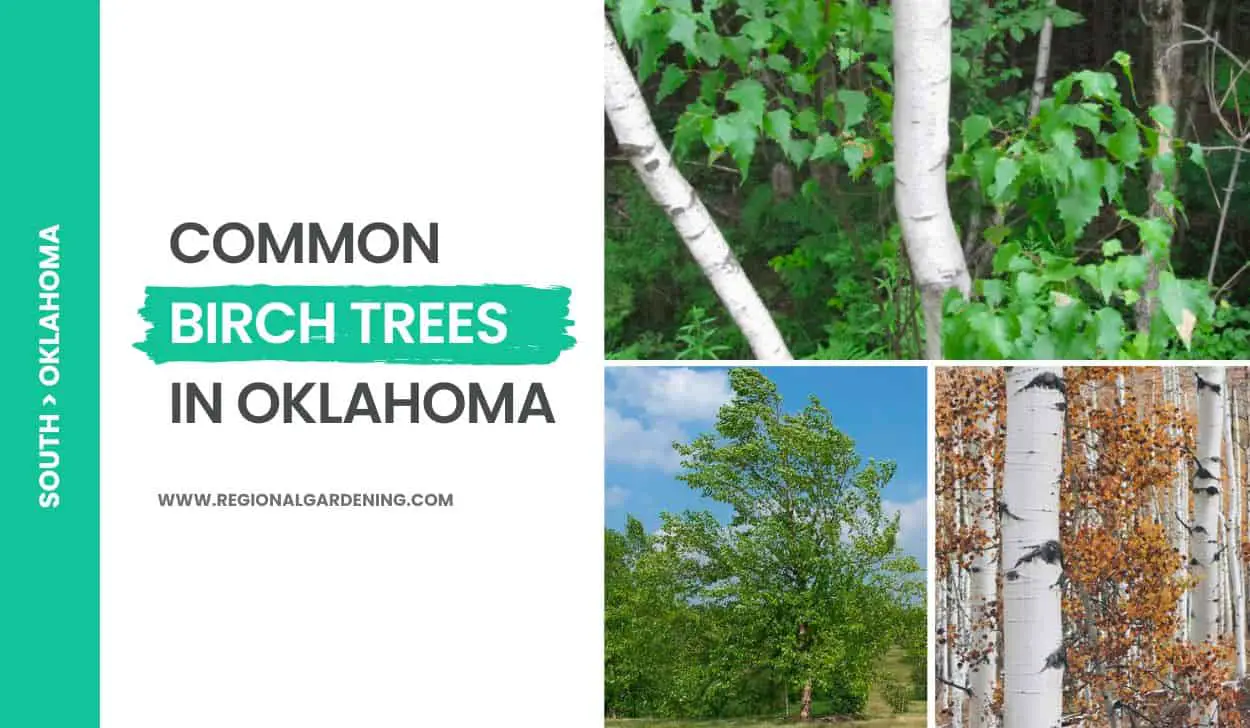
Birch trees have made their mark on Oklahoma’s diverse flora with their distinctive features and elegant presence. This state is home to three types of birch trees: one native species and two non-native naturalized species. The appearance and characteristics of these trees vary, making identification essential for any nature enthusiast.
In this article, we will go over the detailed descriptions and photos of each birch tree type to help with identification.
So, let’s begin exploring the birch trees in Oklahoma one by one.
1. River Birch
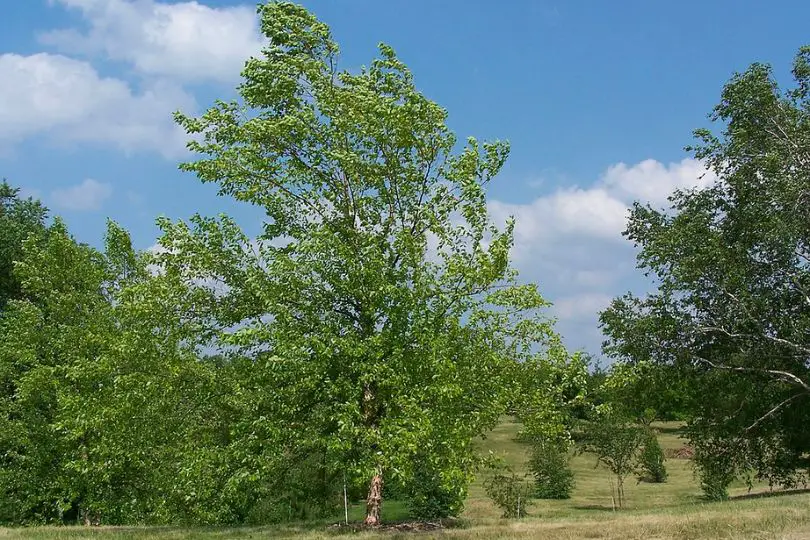
- Scientific Name: Betula nigra L.
- Common Name(s): River Birch, Red Birch
- Mature Height: 40-70 feet (12-20 meters)
- Native Region: Eastern part of Oklahoma
- Flowers: Male flowers in long catkins, female flowers in short cone-like catkins
- Fruit: Cone-shaped, about 1 inch long, densely crowded with winged nutlets
- Uses: Firewood, woodenware, turnery, wagon hubs
The River birches are the only native birch trees in Oklahoma and surrounding low-elevated regions in the southern region. It is uniquely designed to thrive near watercourses, making it ideal for planting near streams, ponds, lakes, and marshes.
The tree thrives in the deep, rich soils found around the edges of large bodies of water, even in places prone to flooding.
The River Birch’s main distinguishing trait is its unique bark. The bark is reddish-brown to cinnamon-red and peels back in stiff, papery layers, leaving a ragged look. The bark on older trunks grows deeply wrinkled and turns a reddish-brown color. This distinctive bark pattern distinguishes it from other birch trees.
River Birch leaves are simple and alternating, measuring 2 to 3 inches in length. They are oval and have double-toothed edges. The leaves have a dark green upper surface and a pale yellowish-green beneath the surface.
The River Birch produces two varieties of flowers on the same tree in terms of reproduction. Male flowers emerge in long catkins near the extremities of the twigs, while female flowers appear in little, feathery cone-like catkins before the leaves. Female blooms eventually grow into cone-shaped fruits around 1 inch long. From May to June, these fruits are densely packed with little winged nutlets.
River Birch’s wood is dense and close-grained, but its commercial value is restricted due to the tree’s scattered presence along stream banks. Nonetheless, it has been used to make woodenware, turnery, and wagon hubs. Furthermore, the tree is frequently harvested for firewood.
River Birch can be a valuable addition to Oklahoma landscapes due to its aesthetic appeal, particularly its unusual peeling bark and graceful form. It is a wonderful choice for planting near bodies of water or in damp environments.
This tree requires little care, but it does best in moist, well-drained soil. Watering should be done regularly, especially during dry spells. It is also critical to keep an eye out for birch leafminer, a frequent insect that can harm the tree’s health. Pruning may be required to keep the structure robust and to eliminate any dead or diseased branches.
2. Paper Birch
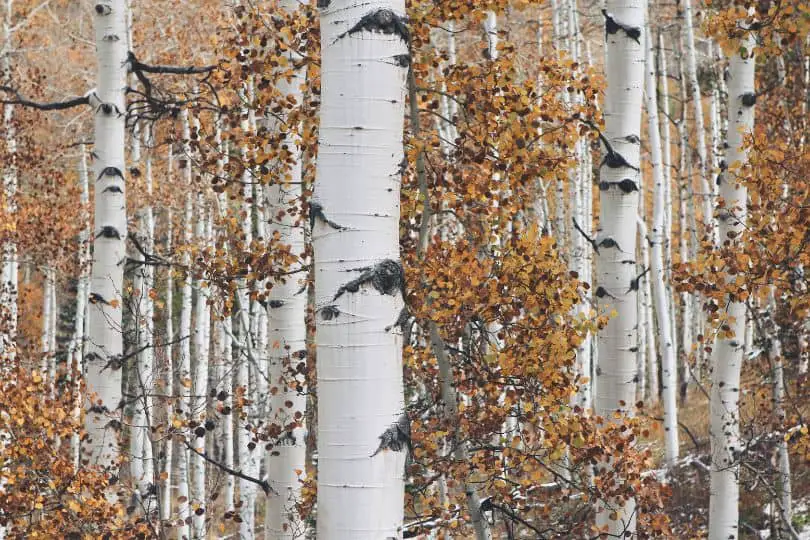
- Scientific Name: Betula papyrifera
- Common Name(s): Paper Birch, White Birch, Canoe Birch
- Mature Height: 50-70 feet (15-21 meters)
- Native Region: North America
- Flowers: No Flowers
- Fruit: Small, winged seeds
- Uses: Ornamental tree, habitat for wildlife, paper production, canoe building, medicinal uses
Paper birch, often known as Betula papyrifera, is a North American deciduous tree. The name “Paper Birch” comes from its distinctive white bark, which flakes off in small pieces. This tree matures to a height of 50-70 feet (15-21 meters) and has a pyramid-shaped canopy with slender limbs that drape elegantly.
Paper Birch is a North American native that can be found from Alaska to the northeastern United States. It is commonly found along riverbanks, lake coastlines, and marshes in moist, well-drained soils. Paper Birch has a strong resistance to cold weather, making it ideal for Oklahoma.
Paper Birch may not have prominent flowers, but it makes up for it with its lovely bark and foliage. The bark of the tree begins reddish-brown and eventually turns white as it ages. It has a papery feel and makes a magnificent visual display when sunlight hits the trunk. The triangular to oval-shaped leaves have serrated edges and develop a bright golden color in the fall, adding to their decorative value.
Paper Birch is a popular decorative tree in Oklahoma settings due to its visually pleasing bark and foliage. It brings beauty and brightness to any garden or landscape. The tree also serves as a home and food source for a variety of wildlife species.
Furthermore, Paper Birch has practical use like as paper production, since its bark can be gathered and processed to generate birch bark paper. Traditional cultures used the bark to make canoes, baskets, and other products. The inner bark has therapeutic characteristics as well and has been utilized in traditional medicine for a variety of purposes.
It is critical to pick a spot in Oklahoma with wet, well-drained soil and full sun to partial shade for planting Paper Birch. Watering regularly is crucial, especially during dry spells. Mulching around the base of the tree aids in moisture retention and weed control. To keep the tree healthy and in shape, prune any broken or diseased branches. Paper Birch may thrive and add a particular charm to Oklahoma landscapes with proper care.
3. Gray Birch
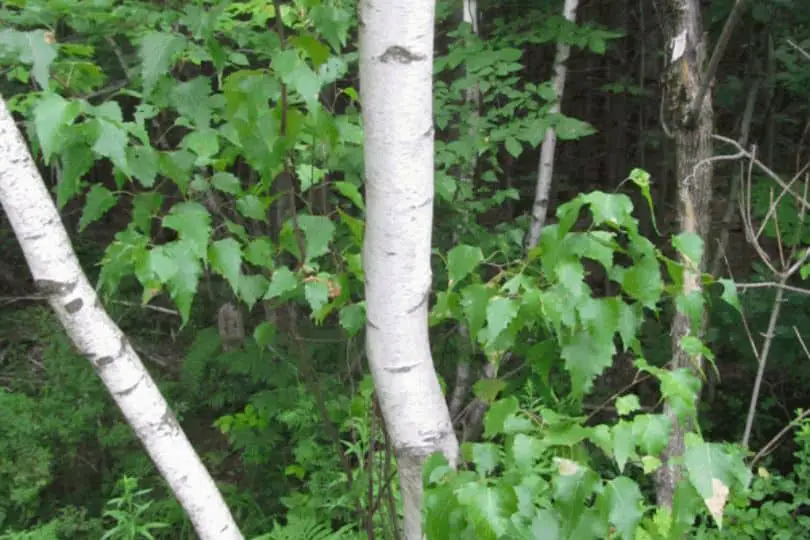
- Scientific Name: Betula populifolia
- Common Name(s): Gray Birch
- Mature Height: 20-50 feet (6-15 meters)
- Native Region: North America
- Flowers: No Flowers
- Uses: Gray Birch is commonly used for erosion control and reforestation purposes due to its fast growth rate and ability to adapt to various soil types.
Gray birch, scientifically known as Betula populifolia, is a North American deciduous tree. Gray Birch is the common name for this tree because of its unusual grayish bark that peels off in horizontal lines. This tree matures to a height of 20-50 feet (6-15 meters) and has a narrow, erect canopy with delicate, somewhat drooping limbs.
Gray Birch is native to northeastern North America and can be found in a variety of habitats and situations. It is frequently found in disturbed places like clearings, roadsides, and abandoned fields. This tree is tolerant to a variety of soil types but prefers moist, well-drained soils.
Although Gray Birch does not produce beautiful flowers, its lovely bark and leaves compensate. The oval-shaped leaves have sharp points and serrated edges. During the spring and summer, they are a pale green tint, changing to a brilliant yellow in the fall. Its unusual bark, which is smooth and thin, makes it easy to peel off in horizontal strips, revealing the grayish-white inner bark, compensating for the lack of blooms.
Gray Birch can be used for erosion control in Oklahoma landscapes due to its strong root system and capacity to handle a variety of soil conditions. It’s also a wonderful choice for replanting, especially in disturbed regions where other trees would struggle to grow. To grow in Oklahoma’s environment, Gray Birch requires full sun to part shade and regular watering.
Birch Trees In Oklahoma – Frequently Asked Questions (FAQs)
Let us go over some of the most frequently asked questions about birch trees in Oklahoma.
Are there any native birch trees in Oklahoma?
Yes, there are native birch trees in Oklahoma. The most common species found in the state is the river birch (Betula nigra). River birch trees are medium-sized deciduous trees that are well-adapted to the region’s climate and soil conditions. Their distinctive peeling bark, which displays shades of brown, pink, and orange, makes them simple to identify. River birch trees are often found along rivers, streams, and wetland areas in Oklahoma.
Other commonly found birch species in Oklahoma are paper birch and gray birch. However, they are not native to the state.
What are the common uses of birch trees in Oklahoma?
In Oklahoma, birch trees are used for a variety of purposes. Because of their distinctive white bark and attractive foliage, they are commonly used for landscaping and beautifying residential and commercial properties. Another common use is for shade and windbreaks, as birch trees can grow to provide ample shade and protection from strong winds.
Birchwood is also prized for its aesthetic appeal and durability, making it ideal for furniture, cabinetry, and woodworking projects. Birch trees are also used in traditional medicine for their medicinal properties, particularly in the treatment of skin conditions and inflammation. Finally, birch sap is harvested and used to make a variety of products such as birch syrup and birch beer.
Similar Articles
- Native Pine Trees In Oklahoma
- Native Maple Trees In Oklahoma
- Native Elm Trees In Oklahoma
- Common Palm Trees In Oklahoma
- Native Hickory Trees In Oklahoma
- Native Oak Trees In Oklahoma
- Native Cedar Trees In Oklahoma
- Native Ash Trees In Oklahoma
- Common Cherry Trees In Oklahoma
- Native Cypress Trees In Oklahoma
Birch Trees In Oklahoma – Sources
The Regional Gardening team makes sure that the information in our articles is accurate by only using sources that are known to be trustworthy. Some of these sources are peer-reviewed journals from government agencies, well-known universities, and scientific research organizations.
- Forest Tree Species, Oklahoma State University Extension
- Oklahoma Trees for Gardening Resource, Oklahoma State University Extension
- Oklahoma Native Trees by County, Oklahoma Forestry Services
- Native Plant Guide, Oklahoma County Conservation District
- Plants, Seeds & Landscapes, Oklahoma Native Plant Society
- Plant Selections for Oklahoma, Oklahoma State University Extension



